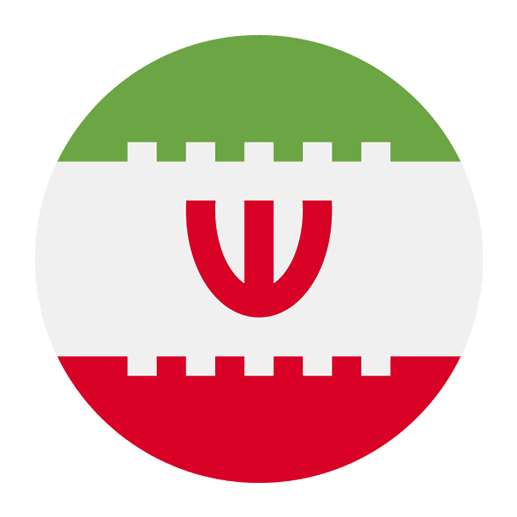Persian, also known as Farsi, is the official language of Iran and is spoken by over 70 million people worldwide. However, like many widely spoken languages, Persian has numerous regional dialects that exhibit significant variations in pronunciation, vocabulary, and grammar. These dialects not only enrich the language but also provide a fascinating glimpse into the cultural and historical diversity of Persian-speaking regions.
Understanding these dialects can be particularly rewarding for language learners who wish to gain a deeper appreciation of Persian and its speakers. This article delves into the most prominent regional dialects of Persian, highlighting their unique characteristics and offering insights into how they can enhance your language learning journey.
The Importance of Persian Dialects
Persian dialects play a crucial role in the linguistic landscape of Iran and other Persian-speaking regions. They reflect the historical, social, and geographical contexts in which they developed. By studying these dialects, learners can gain a more comprehensive understanding of the Persian language and its rich cultural heritage.
Moreover, familiarity with regional dialects can significantly enhance communication skills, especially for those planning to travel or work in Persian-speaking countries. It allows learners to connect more deeply with native speakers, understand local nuances, and appreciate the diversity within the Persian-speaking community.
Main Regional Dialects of Persian
Persian dialects can be broadly categorized into three main groups: Western Persian (spoken in Iran), Eastern Persian (spoken in Afghanistan and Tajikistan), and Southern Persian (spoken in parts of the Persian Gulf region). Each of these groups comprises several distinct dialects, which we will explore in detail below.
Western Persian (Iranian Persian)
Western Persian, commonly referred to as Iranian Persian or simply Farsi, is the most widely spoken dialect of Persian. It serves as the standard form of the language and is used in official settings, media, and education in Iran. However, within Iran itself, there are numerous regional dialects that exhibit unique linguistic features.
Tehrani Persian
Tehrani Persian is the dialect spoken in Tehran, the capital of Iran. As the political and cultural center of the country, Tehran has exerted significant influence on the standardization of Persian. Consequently, Tehrani Persian closely resembles the standard language taught in schools and used in the media. However, it also has distinct features, such as the pronunciation of certain vowels and consonants, that set it apart from other regional dialects.
Isfahani Persian
The Isfahani dialect is spoken in the central city of Isfahan, known for its rich historical and cultural heritage. Isfahani Persian is characterized by its unique intonation patterns and vocabulary. For instance, Isfahani speakers often use different words for common items and expressions compared to standard Persian. Learning Isfahani Persian can offer valuable insights into the local culture and history of this ancient city.
Shirazi Persian
Shirazi Persian is spoken in the southern city of Shiraz, famous for its poetry, gardens, and wine. This dialect is known for its melodic intonation and distinct phonetic features. For example, Shirazi speakers often pronounce the /r/ sound differently from other Persian speakers. Additionally, Shirazi Persian has a rich vocabulary influenced by the region’s historical interactions with other cultures, such as Arabic and Turkish.
Eastern Persian (Dari and Tajik)
Eastern Persian encompasses the dialects spoken in Afghanistan and Tajikistan, known as Dari and Tajik, respectively. While these dialects share many similarities with Western Persian, they also have distinct characteristics that reflect their unique historical and cultural contexts.
Dari Persian
Dari is one of the two official languages of Afghanistan, alongside Pashto. It is widely spoken in urban areas and serves as a lingua franca for communication between different ethnic groups. Dari Persian has several phonological and lexical differences from Iranian Persian. For example, Dari speakers often use different vowel sounds and stress patterns. Additionally, Dari vocabulary includes many words borrowed from Pashto, Urdu, and other regional languages.
Tajik Persian
Tajik Persian is spoken in Tajikistan and parts of Uzbekistan. Unlike Iranian Persian and Dari, Tajik is written in the Cyrillic script, a legacy of Soviet influence. This script change has led to some differences in spelling and pronunciation. Tajik Persian also includes many loanwords from Russian, reflecting the region’s historical and political ties. Despite these differences, Tajik remains mutually intelligible with other Persian dialects, allowing for effective communication among Persian speakers.
Southern Persian (Persian Gulf Dialects)
Southern Persian dialects are spoken in the coastal regions along the Persian Gulf, including parts of Iran, Bahrain, and the United Arab Emirates. These dialects are influenced by the region’s maritime history and interactions with Arabic-speaking populations.
Bandari Persian
Bandari Persian is spoken in the southern port city of Bandar Abbas and surrounding areas. This dialect is characterized by its unique phonetic features, including the pronunciation of certain consonants and vowels. Bandari Persian also incorporates many loanwords from Arabic, reflecting the region’s historical trade connections. Understanding Bandari Persian can provide valuable insights into the maritime culture and history of the Persian Gulf region.
Bahraini Persian
Bahraini Persian, also known as Ajami, is spoken by the Persian-speaking minority in Bahrain. This dialect exhibits significant Arabic influence, both in terms of vocabulary and pronunciation. Bahraini Persian speakers often code-switch between Persian and Arabic, reflecting the bilingual nature of the community. Learning Bahraini Persian can offer a unique perspective on the cultural and linguistic dynamics of the Persian Gulf region.
Linguistic Features of Persian Dialects
While Persian dialects share a common linguistic foundation, they exhibit several distinct features that set them apart. These differences can be categorized into phonological, lexical, and grammatical variations.
Phonological Variations
Phonological variations refer to differences in the sounds of speech, including pronunciation and intonation patterns. Persian dialects exhibit several notable phonological differences:
Vowel Pronunciation
One of the most significant phonological differences among Persian dialects is the pronunciation of vowels. For example, in Tehrani Persian, the vowel /æ/ (as in “cat”) is pronounced as /e/ (as in “bed”) in certain contexts. In contrast, Dari speakers tend to pronounce vowels more distinctly, maintaining a clear distinction between /æ/ and /e/.
Consonant Pronunciation
Consonant pronunciation also varies among Persian dialects. For instance, in Shirazi Persian, the /r/ sound is often pronounced as a flap [ɾ], similar to the Spanish “r.” In Bandari Persian, the /q/ sound (a uvular stop) is pronounced as a glottal stop [ʔ], similar to the Arabic “hamza.”
Intonation Patterns
Intonation patterns, or the rise and fall of pitch in speech, can differ significantly among Persian dialects. For example, Isfahani Persian is known for its distinctive melodic intonation, which sets it apart from other dialects. These intonation patterns can convey different meanings or emotions, making them an essential aspect of effective communication.
Lexical Variations
Lexical variations refer to differences in vocabulary and word usage. Persian dialects often have distinct words and expressions for common items and concepts:
Regional Vocabulary
Many Persian dialects have unique regional vocabulary that reflects local culture and history. For example, in Isfahani Persian, the word for “bread” is “nun,” while in standard Persian, it is “nan.” Similarly, in Dari, the word for “school” is “maktab,” whereas in Iranian Persian, it is “madrese.”
Loanwords
Loanwords from other languages also contribute to lexical variations among Persian dialects. For instance, Tajik Persian includes many loanwords from Russian, such as “telefon” (telephone) and “radio.” In contrast, Bandari Persian incorporates numerous Arabic loanwords, reflecting the region’s historical trade connections.
Grammatical Variations
Grammatical variations refer to differences in sentence structure, verb conjugation, and other aspects of grammar. While Persian dialects generally share a common grammatical framework, there are some notable differences:
Verb Conjugation
Verb conjugation can vary among Persian dialects, particularly in terms of verb endings and auxiliary verbs. For example, in Tajik Persian, the past tense of the verb “to go” is “raftam,” while in Iranian Persian, it is “raftam” or “raftam.” These subtle differences can impact the overall structure of sentences and the way actions are described.
Sentence Structure
Sentence structure, including word order and the use of particles, can also differ among Persian dialects. For instance, in Dari, the use of the particle “ra” to indicate the direct object is more prevalent than in Iranian Persian. This difference can affect the way sentences are constructed and understood.
Learning Persian Dialects
For language learners, exploring Persian dialects can be a rewarding and enriching experience. Here are some tips for effectively learning and appreciating these regional variations:
Immerse Yourself in the Dialect
Immersion is one of the most effective ways to learn a new dialect. If possible, spend time in the region where the dialect is spoken. Engage with native speakers, listen to local media, and participate in cultural activities. Immersion allows you to experience the dialect in its natural context and develop a deeper understanding of its nuances.
Utilize Language Resources
There are numerous language resources available for learning Persian dialects, including textbooks, online courses, and language apps. Look for resources that focus specifically on the dialect you are interested in. For example, if you want to learn Dari, seek out Dari-specific language materials and practice exercises.
Practice with Native Speakers
Practicing with native speakers is essential for developing proficiency in a dialect. Join language exchange groups, attend local cultural events, or connect with native speakers online. Regular practice with native speakers helps you improve your pronunciation, vocabulary, and overall fluency in the dialect.
Study Cultural Context
Understanding the cultural context in which a dialect is spoken can enhance your language learning experience. Learn about the history, traditions, and customs of the region. This cultural knowledge will provide valuable insights into the dialect and help you connect more deeply with native speakers.
Be Patient and Persistent
Learning a new dialect can be challenging, but patience and persistence are key. Don’t be discouraged by initial difficulties or differences from the standard language. With consistent practice and dedication, you will gradually become more comfortable and proficient in the dialect.
Conclusion
Exploring Persian regional dialects offers language learners a unique opportunity to deepen their understanding of the Persian language and its cultural diversity. Each dialect reflects the rich history and heritage of its region, contributing to the vibrant tapestry of Persian-speaking communities. By immersing yourself in these dialects, utilizing language resources, and practicing with native speakers, you can enhance your language skills and gain a deeper appreciation for the beauty and complexity of Persian. Whether you are studying Tehrani Persian, Dari, Tajik, or any other regional dialect, the journey of learning and exploration will undoubtedly be a rewarding and enriching experience.

